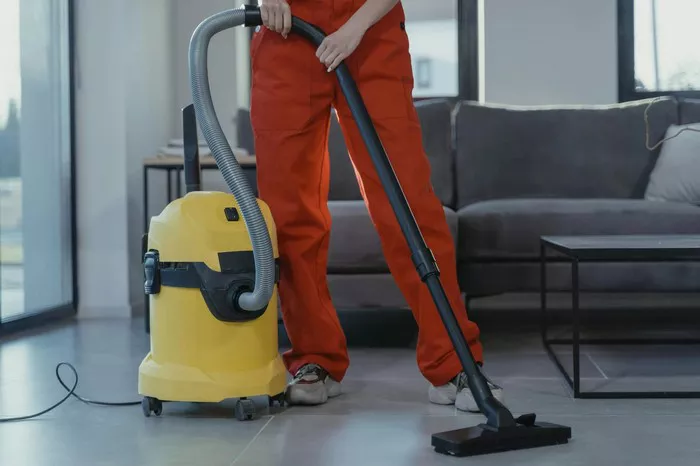Maintaining cleanliness in homes or commercial spaces is paramount for health, comfort, and aesthetics. In this regard, vacuum cleaners play a crucial role by efficiently removing dust, dirt, pet hair, and allergens from floors and surfaces. Choosing the right vacuum cleaner is essential to ensure effective cleaning while considering individual needs and budget constraints.
Types of Vacuum Cleaners:
1. Upright Vacuum Cleaners: Upright vacuum cleaners are popular for their powerful suction and wide cleaning path, making them suitable for large carpeted areas. They typically feature a motorized brush roll for deep cleaning carpets and often come with attachments for above-floor cleaning.
2. Canister Vacuum Cleaners: Canister vacuums offer versatility with a separate canister and wand, allowing easy maneuverability around furniture and tight spaces. They are suitable for both carpets and hard floors and often come with a range of attachments for various cleaning tasks.
3. Stick Vacuum Cleaners: Stick vacuums are lightweight and compact, making them ideal for quick cleanups and reaching tight spaces. While they may have less suction power compared to upright or canister vacuums, they offer convenience for everyday use, especially in smaller homes or apartments.
4. Handheld Vacuum Cleaners: Handheld vacuums are designed for portable and spot cleaning, perfect for upholstery, stairs, and car interiors. They are lightweight and easy to maneuver, making them a handy addition for tackling small messes and spills.
5. Robotic Vacuum Cleaners: Robotic vacuums automate the cleaning process by navigating through rooms and floors autonomously. They offer convenience and time-saving benefits, although they may require occasional manual intervention for optimal performance.
Key Features to Consider:
1. Suction Power: The suction power of a vacuum cleaner determines its effectiveness in picking up dirt and debris. Opt for models with adjustable suction settings to accommodate different floor types and cleaning needs.
2. Filtration System: A quality filtration system is essential for trapping dust, allergens, and other particles, particularly for allergy sufferers. Look for HEPA filters or multi-stage filtration systems for optimal air quality.
3. Maneuverability: Features such as swivel steering, lightweight design, and adjustable height contribute to ease of use and maneuverability, allowing you to clean efficiently without strain or fatigue.
4. Attachments and Accessories: Attachments such as crevice tools, upholstery brushes, and extension wands enhance the versatility of a vacuum cleaner, enabling thorough cleaning of various surfaces and hard-to-reach areas.
5. Bagged vs. Bagless: Bagged vacuum cleaners require regular replacement of bags but may offer better dust containment for allergy sufferers. Bagless models are more convenient in terms of emptying the dustbin but may require more frequent filter maintenance.
Performance and Efficiency:
Different vacuum cleaners excel on various floor surfaces, including carpet, hardwood, tile, and laminate. Consider models with adjustable brush rolls or suction settings to adapt to different flooring types. Additionally, check energy efficiency ratings and noise levels to make environmentally friendly and quiet choices.
Affordability and Value:
While price is an important factor, it’s essential to consider the features and performance offered by different vacuum cleaner models. Look for models that offer the best value for money by balancing price with functionality and durability. There are budget-friendly options available without compromising quality, especially from reputable brands.
User Reviews and Ratings:
User reviews and ratings provide valuable insights into real-world experiences with different vacuum cleaner models. Platforms like consumer review websites or online retailers offer a wealth of information from users who have tested the products in their homes. Reading reviews can help gauge reliability, durability, and overall satisfaction before making a purchase decision.
Maintenance and Warranty:
Proper maintenance and care are crucial for prolonging the lifespan of a vacuum cleaner. Regularly clean filters, brush rolls, and dustbins to ensure optimal performance and air quality. Additionally, check the warranty coverage, including the duration and what it typically includes, such as parts replacement or repairs. A longer warranty period provides peace of mind and indicates the manufacturer’s confidence in their product.
Conclusion:
In conclusion, choosing the best and affordable vacuum cleaner requires careful consideration of individual needs, budget constraints, and available features. Assessing factors such as suction power, filtration system, maneuverability, and maintenance requirements can help narrow down options and find the most suitable model. Remember to read user reviews, compare prices, and take advantage of warranty coverage to make an informed decision. Ultimately, investing in a quality vacuum cleaner is essential for maintaining cleanliness and creating a healthy indoor environment.

